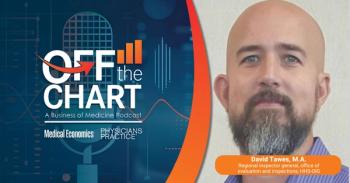
Business-minded physicians
A growing number of physicians are getting a master’s in business administration to learn the business of medicine.
Buying a new $2.5 million CT scanner. Moving the practice across town to a larger location. Hiring additional physician assistants to support doctors.
These are some of the tough decisions made at physician practices around the country. Having a doctor with an MBA can help, says Maria Chandler, MD/MBA, president of the Association of MD/MBA Programs who also runs the joint degree program at University of California at Irvine.
If it’s a new CT scanner you’re considering, you have to forecast how you’ll be able to recoup the investment. And if you’re looking into moving the practice, you need a solid understanding of the local real estate market and patient demographics-or you could be shutting your doors in a couple of years or selling to another practice or hospital, Chandler says. One other consideration if you move: whether to buy or lease the property. The leadership team at her practice wants numbers and a forecast, says Chandler. “None of our doctors can do that, and we wouldn’t ask them to. [But] I’m an MD/MBA, and I can certainly do that,” she adds.
With the country’s move to value-based care, which requires increased scrutiny of healthcare costs and quality, experts cited in this article agree that taking a business approach to medicine is required. Medical schools are responding to this need by offering dual-degree MD/MBA programs. There were six MD/MBA programs in 1993, and there are more than 65 today, Chandler says.
It’s important to include doctors’ voices at the leadership level at physician practices, Chandler adds. Take, for example, the CT scanner you’re considering. While the practice needs to know the clinical value the new piece of equipment brings, doctors need to understand financial analysis-and they need to get comfortable using spreadsheets to develop the financial analysis to justify the investment.
Betty Chu, MD/MBA, went back to pursue an MBA 16 years after getting her MD. Chu, chief medical officer and vice president of medical affairs at Henry Ford West Bloomfield Hospital in Michigan, says that many Generation X doctors like her “know virtually noting about finances, because we were so focused on basic science and biochemistry” in medical school.
She never had to use an Excel spreadsheet until 2011. That’s when Chu, who’s also president of the Michigan State Medical Society, started getting involved in leadership committees at her healthcare organization. That responsibility required her to take a hard look at the facility’s finances, which led to Chu pursuing an MBA to fill a gap in her skill set.
An MBA is valuable to today’s doctors, Chu says, because they have to think about the cost of the care they provide. “With the move from fee-for-service to value-based care, the margins are smaller. There’s so much attention paid to the cost of healthcare where there’s not an infinite pool of money.”
Combined MD/MBA program changes how doctors think
Chandler says that getting a combined MD/MBA early in doctors’ careers transform the way they perceive the care they provide as well as the ecosystem within which the care is provided.
For example, one of her students discovered during a radiology rotation there were some unnecessary delays in how patients were scheduled for imaging exams. Her student’s suggestion? Reroute the patient to cut the patients’ waiting time in half. That would result in financial savings and double the throughput, which would translate to increased earnings for the hospital. Retooling these workflows also meant that patients can be seen faster, which improves patient satisfaction and overall experience.
Leaders at small- to medium-sized physician practices should consider hiring doctors with MBAs because of the extent of consolidation that’s going on in healthcare today, says Jason Reminick, MD/MBA. For example, when the nearby hospital wants to acquire your practice, you need to be able to navigate the process and negotiate the acquisition like a business decision, he says.
Negotiations involves understanding what you need and what the other side needs. It also requires assessing how the other side will approach the discussion-and knowing the point at which you will walk away from the discussion, adds Reminick, who put his pediatric/anesthesia residency on hold to launch a healthcare-related startup.
Anthem Blue Cross paid out nearly 60 percent of reimbursements
This move to value-based contracts means that physician practices need to learn how to orchestrate team-based care throughout the practice, says Rich Joseph, MD/MBA, who’s in the final year of his residency at Boston’s Brigham and Women’s Hospital. That means transitioning doctors away from a mindset where they do everything for patients to one where they collaborate with other members of the clinical team, including nurse practitioners, physician assistants, medical assistants, and social workers.
According to the
“Healthcare is a business, and until you understand the language of business, it’s hard to do business in healthcare,” says Joseph, who points to a “huge gaping hole” in medical education because it doesn’t keep up the demands of healthcare delivery today.
The value of an MBA, even mid-career
David Norris, MD/MBA, an anesthesiologist at Wichita Anesthesiology in Kansas and Physicians Practice editorial board member, was already serving on the board of directors of a 60-plus physician family practice. He realized he needed to learn how to run a business, so he enrolled in an MBA program while still working full time.
The only doctor in his MBA program, Norris credits his classmates from the manufacturing and sales professions who helped expose him to a new environment as well as subject matter. For example, Norris was once assigned to revamp anesthesia screenings where he practices. Because screenings hadn’t been done consistently in the past, many patients arrived the day of their surgery unprepared or they weren’t suitable for surgery. That meant cancelled surgeries, delayed surgeries, wasted time for the surgical team, and frustration all around.
Norris says it was easy to explain the value of preoperative screenings to the nurses and residents on his team. It was easy to justify the cost of the screenings, too. But it was challenging to convince some referring doctors. That’s where he learned how to apply his change management skills. Once doctors understood how the change in workflow would reduce risks the day of patients’ surgeries, most of them agreed to send their patients for preoperative screening.
Still, there were referring doctors who didn’t see the value in sending their patients to Norris’ clinic. They thought they could do the same preoperative workup at their own practices. In response, Norris collected the data for all patients and demonstrated to resistant doctors that their patients would have better outcomes if they went to his preoperative clinic. Norris says his business degree taught him how to look at the numbers and the importance of using data to make clinical decisions.
Today, the majority of referring doctors send their patients for preoperative screenings, but it’s a process that took 18 months.
That’s not to say that going back to school is easy. Chu admits carving out time to pursue an MBA can be difficult. Chu juggled her own patients, took call, and raised two young children during her two-year program. She refers to those years as a blur, one where she leaned a lot on a “very understanding husband.”
How did she find the hours in the day to work full time and work on her an MBA? “You don’t go out to dinner. You take it out of your personal time,” she says.
Newsletter
Optimize your practice with the Physicians Practice newsletter, offering management pearls, leadership tips, and business strategies tailored for practice administrators and physicians of any specialty.










